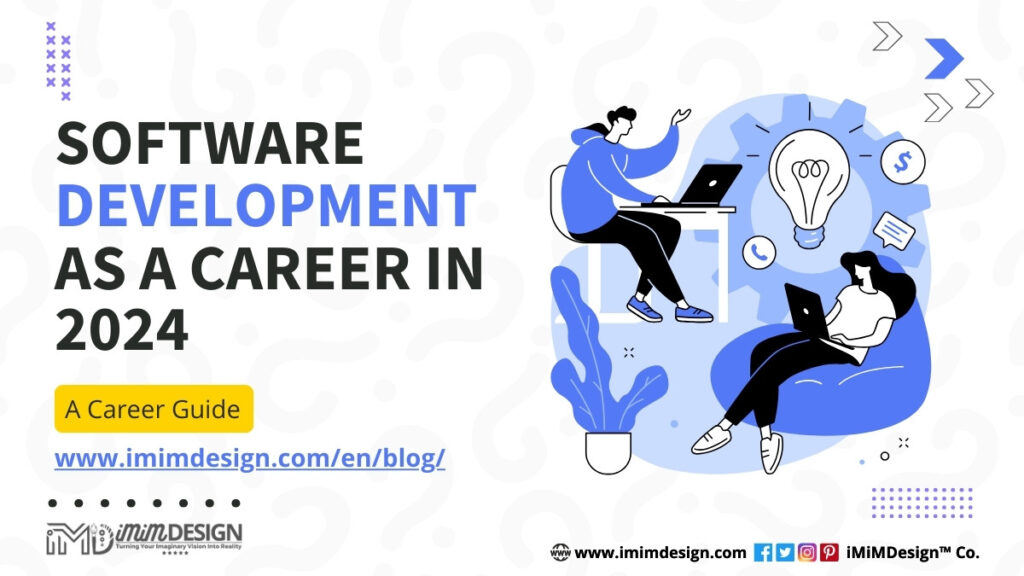Introduction
Virtual Reality and Augmented Reality: Virtual reality (VR) and augmented reality (AR) are two emerging technologies that have gained significant popularity in recent years. They both offer unique experiences to users by transporting them to a different environment or enhancing the world around them. While they are often mentioned together, VR and AR are two distinct technologies with different applications and use cases. Here’s a short story: Virtual Reality and Augmented Reality
In this article, we will take a closer look at the future of virtual reality and augmented reality and explore their potential impact on various industries.
Virtual Reality: Where We Are Today

Virtual reality is a computer-generated simulation of a three-dimensional environment that can be explored and interacted with by the user. It has been around for several decades, but it is only in recent years that it has gained significant traction. The primary application of VR has been in gaming and entertainment, where users can experience a completely different world.
The hardware required for VR has been a significant obstacle to adoption in the past. High-end VR headsets like the Oculus Rift and HTC Vive require a powerful gaming PC to run, making them expensive and not accessible to everyone. However, the launch of standalone VR headsets like the Oculus Quest and the HTC Vive Focus Plus has made VR more accessible and affordable.
The current state of VR technology is impressive. The visuals are realistic, and the level of immersion is unparalleled. However, there is still room for improvement. The field of view could be expanded, and the resolution could be increased to eliminate the “screen door effect.” Additionally, the current generation of VR headsets is still tethered to a physical location, limiting the user’s movement and freedom.
The Future of Virtual Reality

As technology continues to advance, the future of virtual reality looks promising. Here are some of the advancements we can expect to see in the coming years.
Increased Resolution and Field of View
One of the most significant limitations of current VR technology is the resolution and field of view. The current resolution of VR headsets is around 1080 x 1200 pixels per eye. While this is impressive, it is still not enough to eliminate the “screen door effect,” where the user can see the gaps between pixels.
The field of view is also limited, typically around 100-110 degrees. This restricts the user’s peripheral vision, which can take away from the immersion. In the future, we can expect to see higher-resolution displays and an expanded field of view, leading to a more immersive experience.
Haptic Feedback
Haptic feedback is the technology that simulates the sense of touch by applying forces or vibrations to the user’s body. This technology has the potential to enhance the VR experience significantly. For example, haptic feedback could be used to simulate the sensation of touch in virtual objects or to provide feedback during physical therapy exercises.
Currently, haptic feedback technology is limited to simple vibrations in VR controllers. However, in the future, we can expect to see more advanced haptic feedback technology that can simulate a wider range of sensations.
Wireless VR
One of the significant limitations of current VR technology is the tethered experience. Users are restricted to a physical location, which can limit the immersion and freedom of movement. However, in the future, we can expect to see wireless VR headsets that eliminate the need for wires.
Wireless VR technology already exists, but it is currently limited to low-end devices. As technology improves, we can expect to see high-end wireless VR headsets that offer the same level of immersion as tethered devices.
Eye-Tracking and Foveated Rendering
Eye-tracking technology is already available in some VR headsets, but it is not widely used. Eye-tracking can be used to optimize rendering by only rendering the part of the scene the user is looking at. This technique, called foveated rendering, can significantly reduce the processing power required for VR, leading to higher performance and lower hardware requirements.
In the future, we can expect to see more widespread use of eye-tracking technology and foveated rendering. This will lead to more efficient and realistic VR experiences.
Virtual Reality in Education
Virtual reality has the potential to revolutionize the education industry. It can provide students with immersive experiences that would be impossible in the real world. For example, students can explore historical sites or travel to different parts of the world without leaving the classroom.
In the future, we can expect to see more widespread adoption of VR in education. This could include virtual field trips, immersive language learning, and even virtual science experiments.
Virtual Reality in Healthcare
Virtual reality has already been used in healthcare to provide pain management and distraction therapy for patients. In the future, we can expect to see even more widespread use of VR in healthcare. This could include VR simulations for medical training, virtual reality exposure therapy for anxiety disorders, and even VR-assisted surgery.
Augmented Reality: Where We Are Today

Augmented reality is a technology that enhances the real world by overlaying digital information on top of it. It is typically viewed through a mobile device or a pair of smart glasses. Unlike VR, which immerses the user in a completely different environment, AR enhances the world around them.
The most popular application of AR has been in gaming and entertainment. Games like Pokemon Go and Ingress have used AR to bring their gameplay into the real world. However, AR has many other applications, including retail, advertising, and education.
The Future of Augmented Reality
Augmented reality is still in its early stages, but it has the potential to transform many industries. Here are some of the advancements we can expect to see in the coming years.
More Advanced AR Glasses
Currently, the most common way to experience AR is through a mobile device. However, in the future, we can expect to see more advanced AR glasses that provide a hands-free experience. These glasses will allow users to access AR information without having to hold up a device.
The current generation of AR glasses, like the Microsoft HoloLens and the Magic Leap One, are expensive and not accessible to everyone. However, as the technology improves, we can expect to see more affordable and widespread adoption of AR glasses.
Improved Object Recognition
One of the most significant limitations of AR is object recognition. In order to overlay digital information on top of the real world, AR systems need to be able to recognize and track objects in real-time. Currently, object recognition is limited to simple shapes and patterns.
In the future, we can expect to see more advanced object recognition technology that can track and recognize complex objects in real-time. This will lead to more advanced and useful AR applications.
Spatial Computing
Spatial computing is a technology that combines AR, VR, and artificial intelligence (AI) to create a more immersive and intelligent experience. It allows users to interact with digital objects in the real world and vice versa.
In the future, we can expect to see more widespread adoption of spatial computing technology. This could include applications in manufacturing, retail, and even healthcare.
Augmented Reality in Retail
Augmented reality has the potential to transform the retail industry. It can provide customers with an immersive and interactive shopping experience. For example, customers can use AR to see how furniture would look in their home before making a purchase.
In the future, we can expect to see more widespread adoption of AR in retail. This could include virtual try-on for clothing, interactive product demonstrations, and even virtual storefronts.
Augmented Reality in Education
Like VR, augmented reality has the potential to transform the education industry. It can provide students with immersive and interactive learning experiences that can enhance their understanding of complex concepts. For example, students can use AR to explore anatomy in 3D or to interact with historical artifacts.
In the future, we can expect to see more widespread adoption of AR in education. This could include interactive textbooks, virtual field trips, and even AR-assisted language learning.
Augmented Reality in Healthcare
Augmented reality has the potential to revolutionize the healthcare industry. It can provide doctors and nurses with real-time information about patients, improving their ability to diagnose and treat illnesses.
In the future, we can expect to see more widespread adoption of AR in healthcare. This could include AR-assisted surgery, real-time patient monitoring, and even virtual consultations.
Challenges and Opportunities
While the future of VR and AR is promising, there are still many challenges that need to be addressed. Here are some of the most significant challenges and opportunities facing the industry.
Hardware Costs
One of the biggest barriers to widespread adoption of VR and AR is the cost of hardware. High-end VR headsets can cost hundreds or even thousands of dollars, making them inaccessible to many consumers.
In the future, we can expect to see more affordable VR and AR hardware. This could include advancements in mobile VR and AR, as well as more affordable high-end headsets.
Content Creation
Another challenge facing the VR and AR industry is content creation. While there are many VR and AR experiences available, there is still a lack of high-quality, engaging content.
In the future, we can expect to see more investment in VR and AR content creation. This could include the development of VR and AR-specific games, films, and other types of content.
User Experience
User experience is another challenge facing the VR and AR industry. Currently, VR and AR experiences can be clunky and difficult to use. This can lead to user frustration and a lack of adoption.
In the future, we can expect to see more emphasis on user experience in VR and AR. This could include advancements in user interface design, as well as improvements in hardware and software.
Privacy and Security
As with any new technology, there are concerns about privacy and security in VR and AR. For example, VR and AR headsets could potentially collect sensitive data about users, such as their location or biometric data.
In the future, we can expect to see more emphasis on privacy and security in VR and AR. This could include the development of new privacy and security standards, as well as advancements in hardware and software security.
Accessibility
Finally, accessibility is a challenge facing the VR and AR industry. Currently, many VR and AR experiences are not accessible to people with disabilities. This can limit the potential audience for these technologies.
In the future, we can expect to see more emphasis on accessibility in VR and AR. This could include the development of new accessibility features, as well as more widespread adoption of accessibility standards.
Conclusion

The future of VR and AR is promising. These technologies have the potential to revolutionize many industries, from gaming and entertainment to healthcare and education. However, there are still many challenges that need to be addressed, such as hardware costs, content creation, and user experience.
In the coming years, we can expect to see more advancements in VR and AR technology, as well as more widespread adoption of these technologies. As the industry continues to grow and evolve, it will be exciting to see how VR and AR will transform the way we live, work, and play.
If you find this information helpful then consider following us on Google News to stay updated with our latest news and articles. Also consider sharing this post with your friends and social media…

Latest Posts






